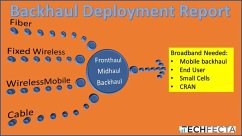This is all before you deploy one thing, pay for one piece of equipment, or even design the backhaul. It needs to be worked through, and chances are it will be around 10% to 25% of the cost. If you're talking small cells, then it could be 50% to 75% of the cost.
The thing about running fiber everywhere is not the fiber itself. It is the costs associated with running the fiber. In fact, anything you deploy has high costs. Building towers and adding a radio to a pole has a high cost. While you may think it's the installation and design, that is a small portion. It's all the civil work and the acquisition paperwork that needs to be done to make it happen.
Costs for utility, permitting, site acquisition, and more all add up. You will need a team of project managers and engineers to manage this. You will need a construction manager to go to the site to verify things are happening per the plan, paperwork, and schedule.
Before companies spend money on any deployment, they have to overcome the hurdles of planning. They need to worry about what and how they deploy, what they will attach to or where, they will bury the fiber. Chances are the end customer will put things out to bid or reverse auction to drive costs down. One thing you learn is that loyalty is disappearing in this new business arena. It's a fight to get the business then a struggle to maintain margin. All the liability is put on the front line, the installers.
Dieser Download kann aus rechtlichen Gründen nur mit Rechnungsadresse in A, B, CY, CZ, D, DK, EW, E, FIN, F, GR, H, IRL, I, LT, L, LR, M, NL, PL, P, R, S, SLO, SK ausgeliefert werden.









